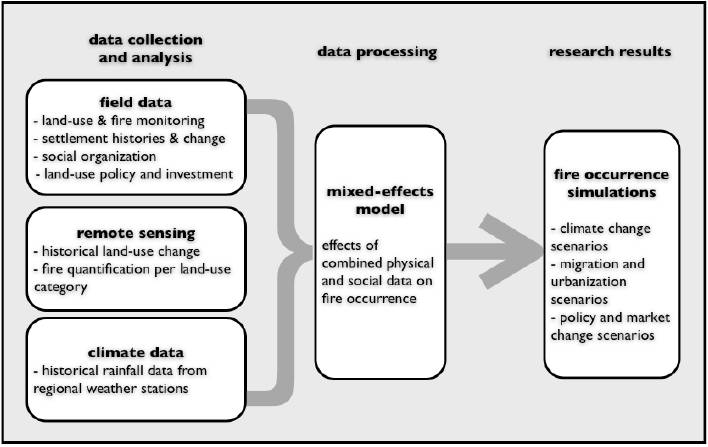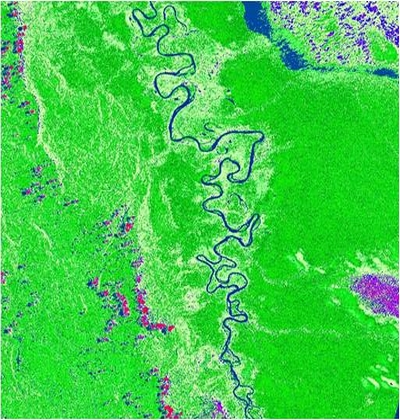During the dry season months, smallholders clear new fields and pastures and leave the slash to dry in the clearing. Towards the end of the dry season, generally between the last weeks of August through September and early October, and at times up to early November, they burn the fields. In the same period, large pastures are burned.
The first data collection activity will establish a baseline of data on households, their size and composition, on rural and urban residence and visits made to the city, migration histories, and uses of fire, including how and by whom decisions are made to burn, who else is informed and what measures, if any, are used to ensure “safe” fires. We will also obtain baseline data on the history and extent of escaped fires, crops and property lost to fires, compensation (if any) paid, community implementation of fire control methods, and historical land configurations and land-use. Our schedule of field data collection is designed around the burning season from March – June 2011 and 2012. In addition, we will use GPS to locate individual farms, large scale agricultural land parcels, and pastures.
Throughout the project we will collect and compile data available from archival sources, especially in the cities of Pucallpa and Iquitos. We will focus on the histories of regional settlement, land-use policy and land-use change. We will also gather information on socioeconomic variables that may have influenced agricultural commodities and the development of lands and communities in Ucayali.


